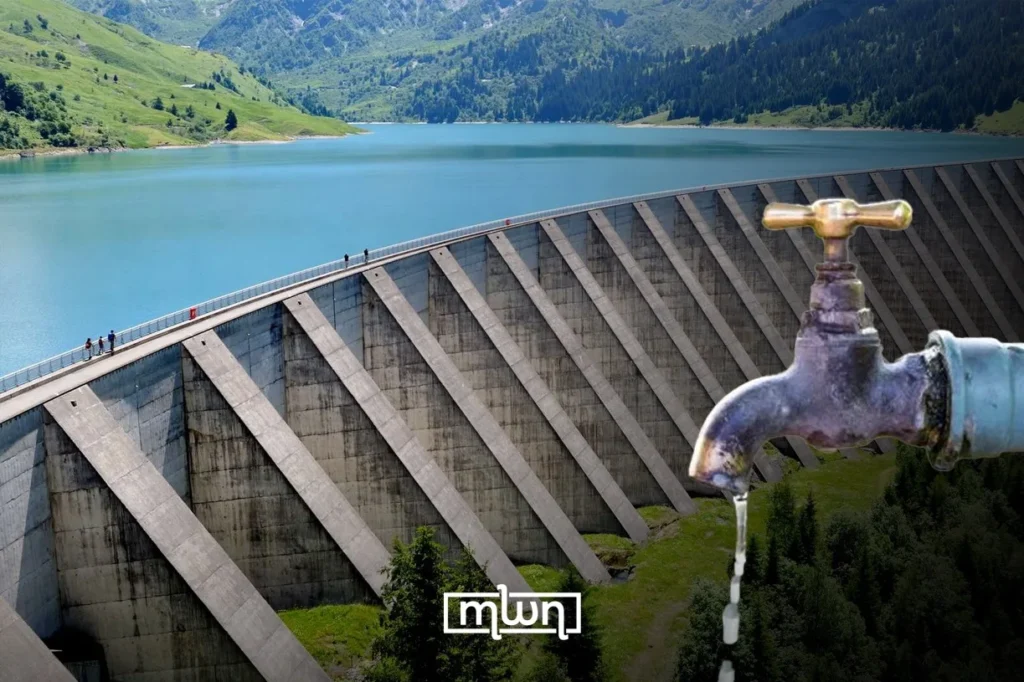Doha – heavy rains have returned to Morocco after seven years of drought, which facilitates many regions and increases the dam across the country. According to official data, the dam filling rates have improved From 26% last year to date around 35% that alleviate immediate concerns regarding water shortages.
However, this improvement is significantly behind the 68% filling rate recorded in 2018, which indicates that the water crisis in Morocco is anything but solved. The recent precipitation mainly benefited northern regions that were less affected by water shortages, while the central and southern areas continue to fight despite the precipitation.
The situation has caused water and climate experts to warn that these temporary rainfall should not distract from coping with the structural water challenges of Morocco, and emphasize that drought is an inherent part of Morocco’s climate history, for long-term management strategies.
“Morocco has always been a land of drought”
Mohammed-Said Karrouk, professor of climatology at the Hassan II University Casablanca, told Morsokko World News (MWN) that the current water situation in Morocco must be understood in its historical context.
“Morocco has always been a land of drought. This is structural, not something new. Before the Moroccan state was founded, there was a before the Idrisid dynasty,” said Karrok and criticized government officials who make statements “without the basis”.
He pointed out that Morocco, although he was a drought -susceptible country, managed to build stability, build up a state and to develop civilization throughout its history, which would not have been possible without the regular return of the precipitation.
The recent rains came after seven years of drought, which “showed the failure of water policy in Morocco,” said Karrok. He admitted that while Morocco Successful Technically speaking in the establishment of dams and the development of various water management technologies: “We did not succeed from management, political and social perspective.”
The most severe precipitation concentrated in northern regions that “did not suffer from water shortages”, says the climatologist, who was a 30-50% capacity even after seven years of drought.
“These areas, which did not have serious water shortage, were given most of the water, which caused small dams to be filled in quickly, where some flooded, which is another problem with dam management. A dam should not overflow,” said Karroouk.
While headquarters and southern regions have also received rainfall, he added that these areas still face challenges. “The water table is still deep because it was very exhausted and will take more time to recover,” clear. “The proof is that dams do not fill in these regions quickly, as a large part of the water must first penetrate the ground to reach the water table.”
He expressed skepticism about whether the government would learn from the current situation.
“I do not think because we have repeatedly said this and all Moroccans have heard it in all social, administrative and political segments in the country. However, the prevailing politics remains on production, production and export, export, export,” said Karuk.
“Water is a factor for administrative, political and social stability as well as environmental, political and nutritional certainty. Those who use this water to maintain power to maintain power management Policy.”
He continued to remember: “When we developed dams, we increased the water capacity. But what did we do? We expanded water consumption – we promoted water consumption.” For him: “This is the reason why the youngest drought was so hard for Moroccans. We created several activities associated with water. When the water stopped, the activities stopped, which led to unemployment and various problems.”
“The more water we have, the more we use water beyond what we need and beyond what we used before,” he concluded and described as proof that the fact that the dam mirrors were lower than now, “we used less water in agriculture and things were fine.”
“Sometimes we think with the memory of a fish”
Abdelhakim El Filali, water and environmental expert and professor at the Sultan Moulay Slimane University in Beni Mellal, with Karrouk announced a common point and continued to share MWN that the water crisis in Morocco goes far beyond the current precipitation pattern.
“In fact, Morocco has experience The sixth year of drought, a drought that of course comes at a time when the demand for water resources increases, be it in agriculture, industry or drinking water, ”explained El Filali.
While he recognized the importance of the recent precipitation in the re -filling of dam reserves and in the groundwater, he warned of complacency. “Unfortunately,” he complained, “sometimes we think with the memory of a fish, in which precipitation forgot over two weeks what we have experienced for more than six years.”
El Filali also pointed out that, unlike alarmist reports, Morocco is historically familiar with alternating long and wet period.
“What we experience today with climate change – the result of dry years and wet years – is a characteristic and integral part of the climate identity of Morocco,” he argued. “We cannot consider this to be new. New is the increasing intensity of extreme climate events, whether heavy drought or sometimes serious flooding. “”
He underlined that historical evidence, including references in the Surah Yusuf and the Tora in the Koran, over seven dry years, followed by seven wet years, confirms that the Mediterranean region is “shaped by alternately dry and wet years, which requires rethinking how we deal with water resources from a scarcity duty, and not from a shell.”
In particular, he emphasized that despite its importance, the current precipitation cannot lead to the water stress that we experience and still experience in many regions. It cannot fill the deficit in insulation and underground groundwater ladders. “
When he sees it, “the problem will always stay if we do not concentrate on consumption, because what we have brought us to where we are today is not just drought, but the unprecedented increase in water resource consumption.”
The water expert pointed out to the main factor in the crisis. How he revealed:
El Filali called for several urgent measures regardless of the rainfall. For him, “the preservation of water consumption, the review of water and agricultural policy and the enforcement of laws for water consumption are among the possible measures to leave the condition of the water stress.”
He criticized the delay in the implementation of planned infrastructure projects. “With a little objectivity, I can say that the water stress Morocco has remained unacceptable for a simple reason for a simple reason: if Morocco had implemented The outlined guidelines for water supply, such as desalination systems, which should be ready in 2016, would have been less bad. “
“It is worth noting that 91% of the wells are not licensed,” said El Filali and pointed out the widespread non -compliance with the Water Act 36.15.
“Perhaps it is time to take responsibility and to establish in our general water and agricultural policy that Morocco will remain an area of changing dry and wet years regardless of the circumstances,” concluded El Filali and added that “it is time to combine responsibility with the accountability.”





